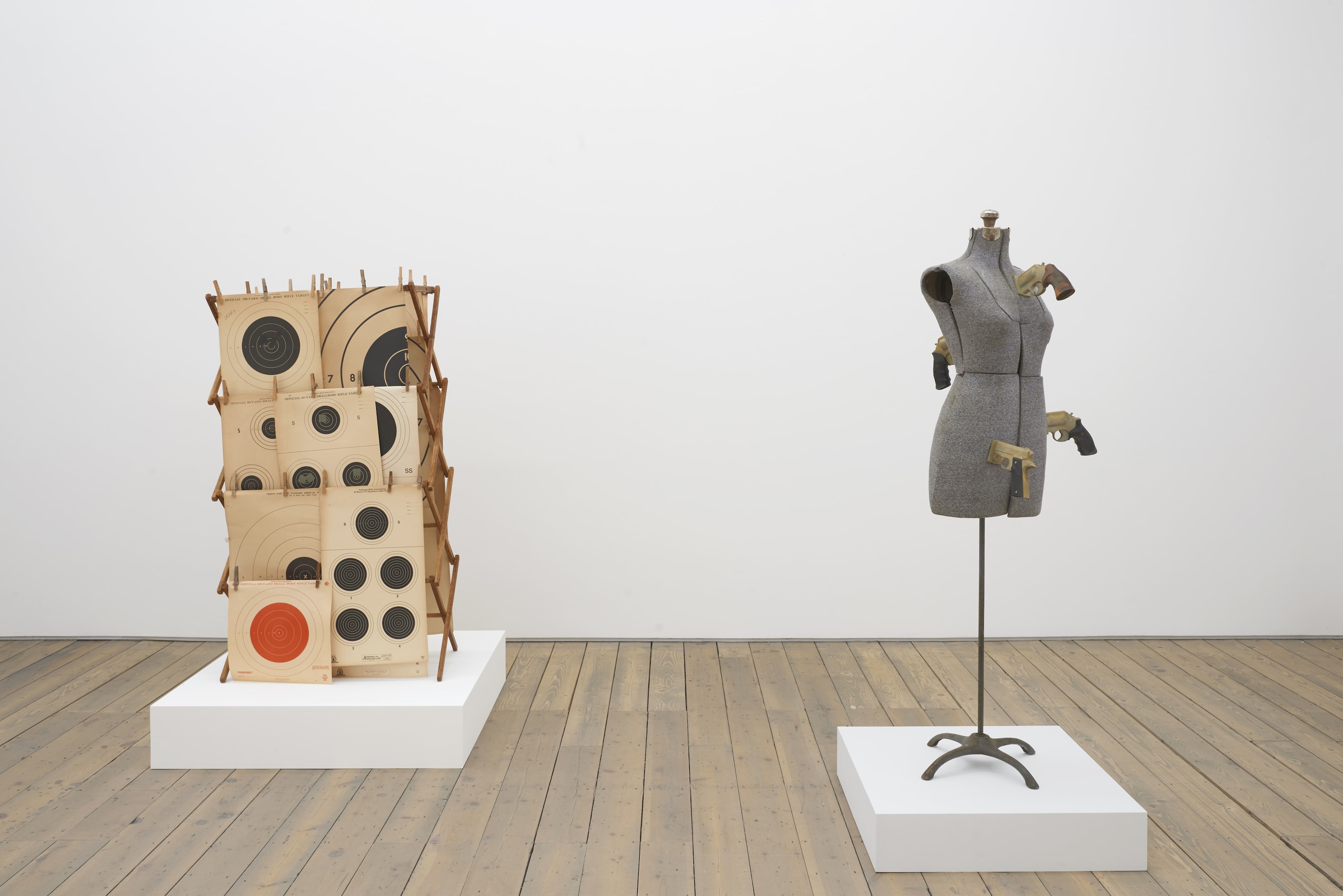
Lonnie Holley, The Growth of Communication, installation view, Edel Asanti, London, UK, 2022. Photo: Andy Keate.
The Secrets of Orford Ness, 2022, featured the calcified remains of a pair of shoes, ensnared by mousetraps and affixed to a frame of chicken wire and wood. The show’s title work, from 2022, flickered with a similar ambivalence, combining more flotsam scoured from these English shores. Containing an old Bakelite telephone in a milk crate, the sculpture blossoms upward into a mass of telephone wires, thread (referencing Alabama as the Cotton State), and beads forming the fragile profiles of human faces. (These silhouettes, overlapping and anonymous in black and white, also drift through Holley’s spray-painted canvases.) The work felt like a kind of memorial device, one both ancient and modern, the artist tuning into the murmuring frequencies of abandoned objects.
The complications of roots—which both define and entrap—was also literalized in I Knew They Were Mine, 2020, a flaking doorframe whose centerpiece is a heavy knot of tree roots, pinioned and austere in so much empty white space. While Holley’s works offer bulwarks against forgetting, they also confront our current moment. Hung Out III, 2020, presented the viewer with a clothes rack decorated with NRA-branded paper targets. Indeed, many of these assemblages overlaid the ghosts of historical trauma with the ever-present reality of violence. The Harvesters, 2020, combined a crucifix-like rake with a model ship caught in a net. Suggesting both Christian symbol and malign white-supremacist effigy, the lingering image is disconcerting in its doubleness. Is it one of danger or hope?
For many of these works, the artist assembled hard industrial materials—chains, padlocks, prison-regulation steel forks—into delicate conductors of feeling. Holley is keenly attuned to the invisible domestic work of women that rarely finds recognition in cultural history. In Working in the House, 2020, once-elegant cotton gloves, threadbare and tattered by time, hung from a chipped picture frame. Holley refuses to make simple statements or to sound glibly triumphant notes: Her Steps to Success, 2020, a stepladder studded with the heels of women’s shoes, nodded to female ascent yet remains a flimsy kind of pedestal, so easily dismantled.
For decades, artists such as Holley—self-taught and working at a distance from the major art centers (and, until fairly recently, outside the mainstream gallery system)—have largely been sidelined or ignored. Yet the neglect of these works belies their quiet power. It puts one in mind of Toni Morrison, speaking of her own artistic conviction: “I stood at the border, stood at the edge, and claimed it as central. I claimed it as central, and let the rest of the world move over to where I was.” The world, at long last, is moving in Holley’s direction.


